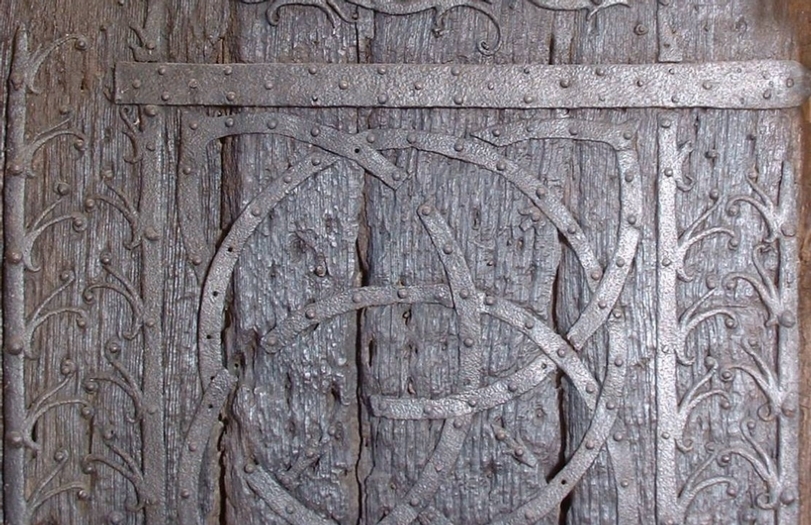Little Hormead: A Door to the Past
St. Mary's Church, Little Hormead, Hertfordshire
National significance
An imposing old oak door at the quiet, little St Mary's Church dates between 1130 and 1150 and is one of the earliest in England. The gnarled oak door, covered in weathered twists of ironwork, used to sit in the north entrance to the church until it was moved inside for display by the Victorians.
The door was finished with iron strap-work of Anglo-Norman design. Fragments of red lead paint were found on the outer borders of the door and wrought ironwork. This appears to be original, fitting the pattern of other doors from this period. No paint evidence was found on the central part of the door.
Earlier conservation
The effects of weather over the centuries had been countered by paint, wax and most recently by animal glue, which trapped moisture in the door’s exposed position. The lowest section decayed after it was moved indoors and placed against a stone threshold.
Solving the problem
We decided on two phases of conservation work inside the church, to avoid moving the door too much. The first phase was completed in 2010.
The process involved:
- Removed the animal glue with damp swabs - a delicate operation under high magnification, as parts of the wood were crumbling from insect attack
- Replaced terminally decayed areas with new oak in jigsaw fashion, made to fit around the existing timbers
- Consolidated and re-attached loose oak flakes with a paste of oak dust and lime putty or resin
- Cleaned the ironwork with great care and re-attached loose sections
- Carried out trial stabilisation on areas hidden from view
So far, the cost of conservation has been approximately £40,000. There's still more to do to complete the project, but unfortunately we don’t yet have the funds.

